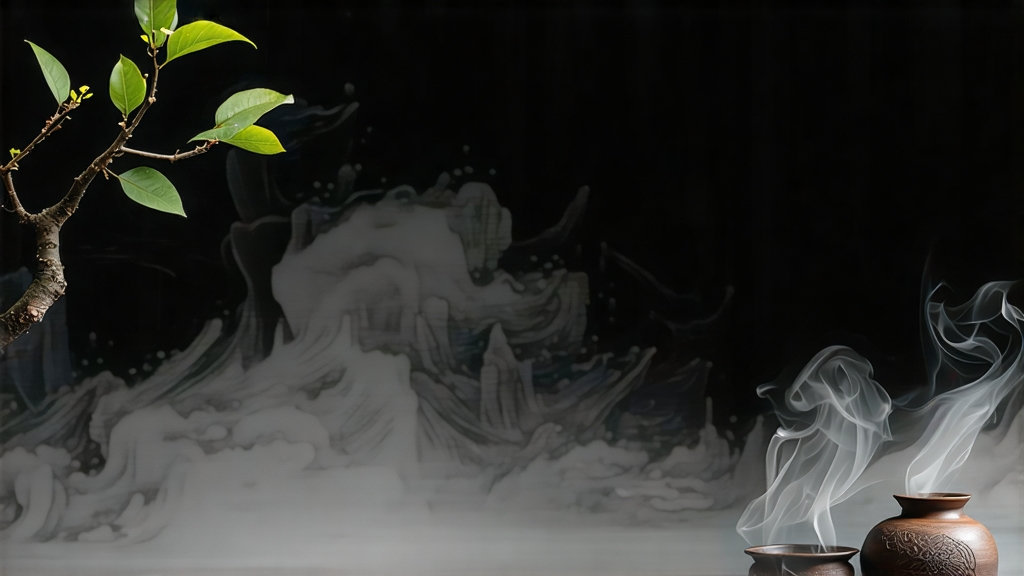
Tucked away in the humid, karst-pitted southwest of China, the small district of Liu Bao in Guangxi Wuzhou has given the world one of its most cellar-worthy teas. To the uninitiated, Liu Bao looks like a black tea, smells like a forest floor after rain, and tastes like a memory that improves with every recollection. Yet it is neither the famous Pu-erh of Yunnan nor the smoky Lapsang of Fujian; it is a genre of its own within the Chinese dark-tea family, a genre whose history, craft and cup character deserve a wider global audience.
A 1,500-year-old trail of tribute
The first written record of Liu Bao appears in the authoritative Cha Jing of the Tang dynasty, where Lu Yu lists “Cangwu” (the ancient name for Wuzhou) among the eight prefectures that supplied the imperial court. Caravans then carried compressed leaves along the 6,000-km “Tea Horse Road” from Guangxi through Yunnan and into Tibet, bartering the dark bricks for warhorses. By the Qing Qianlong era (1736-1795), Liu Bao had become so prized that the emperor waived its land tax in exchange for an annual tribute of 1,500 baskets. The tea crossed the South China Sea with coolie laborers and docked in Malaya where tin-mine workers drank it to ward off malaria; thus a humble mountain leaf entered the pantheon of diaspora nostalgia.
From leaf to “golden flower”: the making of Liu Bao
Liu Bao is harvested from a large-leaf sub-variety of Camellia sinensis var. sinensis that thrives in the red lateritic soils of the Dayao Mountains. The pluck is a standard one bud with three or four leaves, tougher and more resinous than the tender Jiangsu spring tips, precisely the raw material needed for the arduous transformation ahead.
Withering
The leaves are spread 5 cm deep on bamboo racks in naturally ventilated sheds. The mountain fog lowers the temperature to 18-22 °C and nudges the moisture down to 65 % over 8–10 hours, softening cell walls without bruising them.
Fixation
A 200 °C drum roaster kills green enzymes in three minutes, far shorter than the pan-firing of green tea. The goal is to arrest oxidation while preserving the leaf’s waxy cuticle for the microbial drama to come.
Rolling
A 45-minute machine roll twists the leaves into thick cords, rupturing 30 % of cell cavities to release polyphenols and sugars that will later feed beneficial fungi.
Pile-fermentation (wo dui)
Here Liu Bao diverges from Pu-erh. The leaves are heaped 70 cm high inside spotless cement chambers, sprayed with mountain spring water until the moisture hits 28 %, and covered with jute sacks. The pile is turned every five days; internal temperatures peak at 58 °C, hot enough to pasteurize pathogens yet hospitable to Eurotium cristatum, the celebrated “golden flower” mold. After 25–30 days the leaf colour shifts from olive to dark umber and the aroma turns from grassy to betel-nut sweet.
Steam and press
The fermented leaf is steamed for 30 seconds, then packed into traditional 50 kg bamboo baskets lined with wild taro leaves. A team of three men compress the tea by foot, tightening the hoop rings until the basket resembles a muscular hourglass. The slight residual moisture continues a slow, anaerobic fermentation for years.
Aging terroir
Unlike wine, Liu Bao does not fear oxygen; it craves humidity. Warehouses in Wuzhou maintain 28 °C and 75 % RH, conditions that mimic the holds of the junks that once carried the tea to Southeast Asia. Over decades the taro leaf imparts a faint vanilla note while the bamboo lends a whisper of green coconut. A 1970s basket recently auctioned in Kuala Lumpur for USD 28,000 tasted of dried longan, camphor and the leather binding of old ledgers.
How to brew Liu Bao without frightening your guests
Western teapots work, but a 120 ml gaiwan reveals the tea’s kinetic personality. Rinse 5 g of leaf for five seconds to wake the microbes. Use water just off a rolling boil—98 °C—because Liu Bao’s